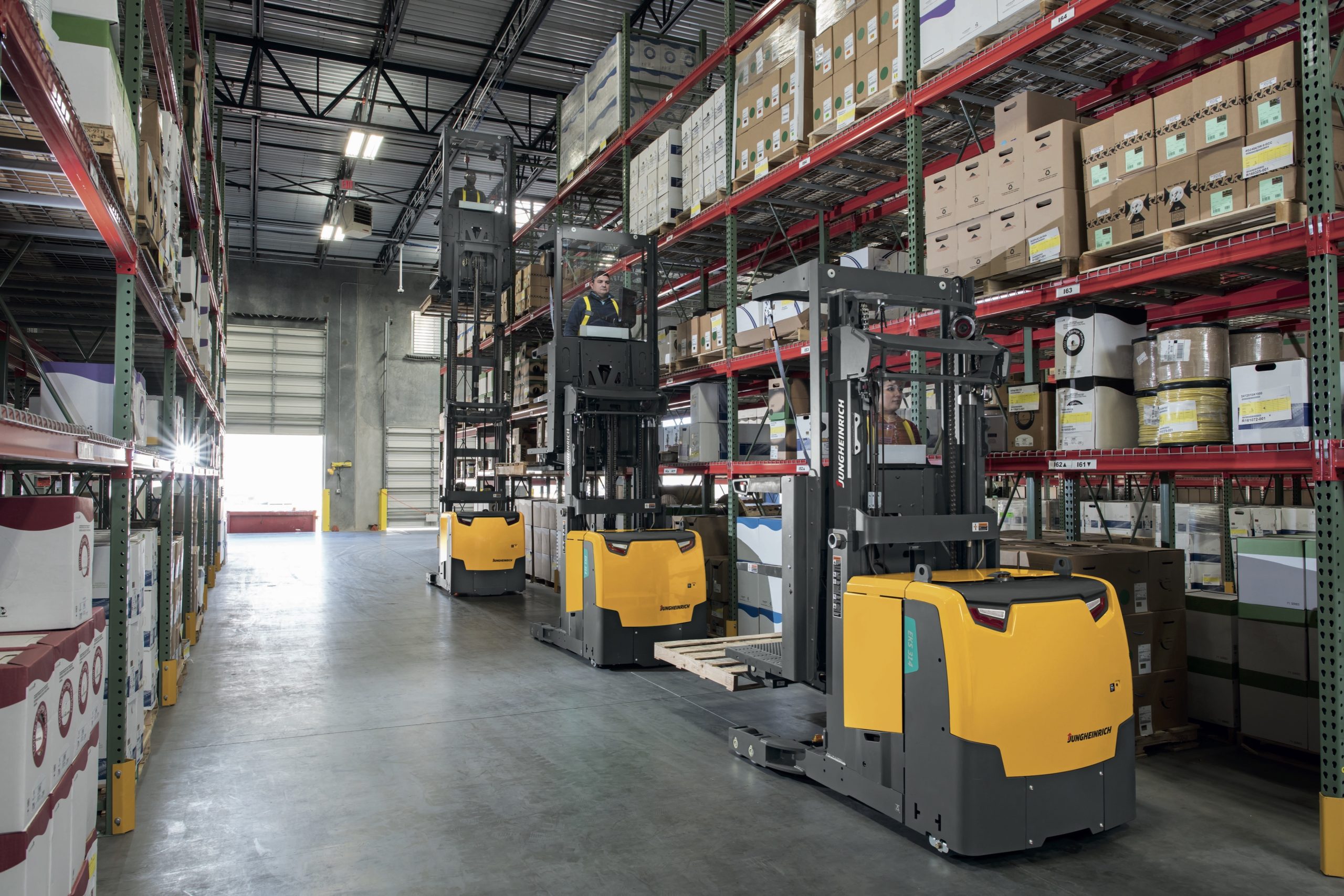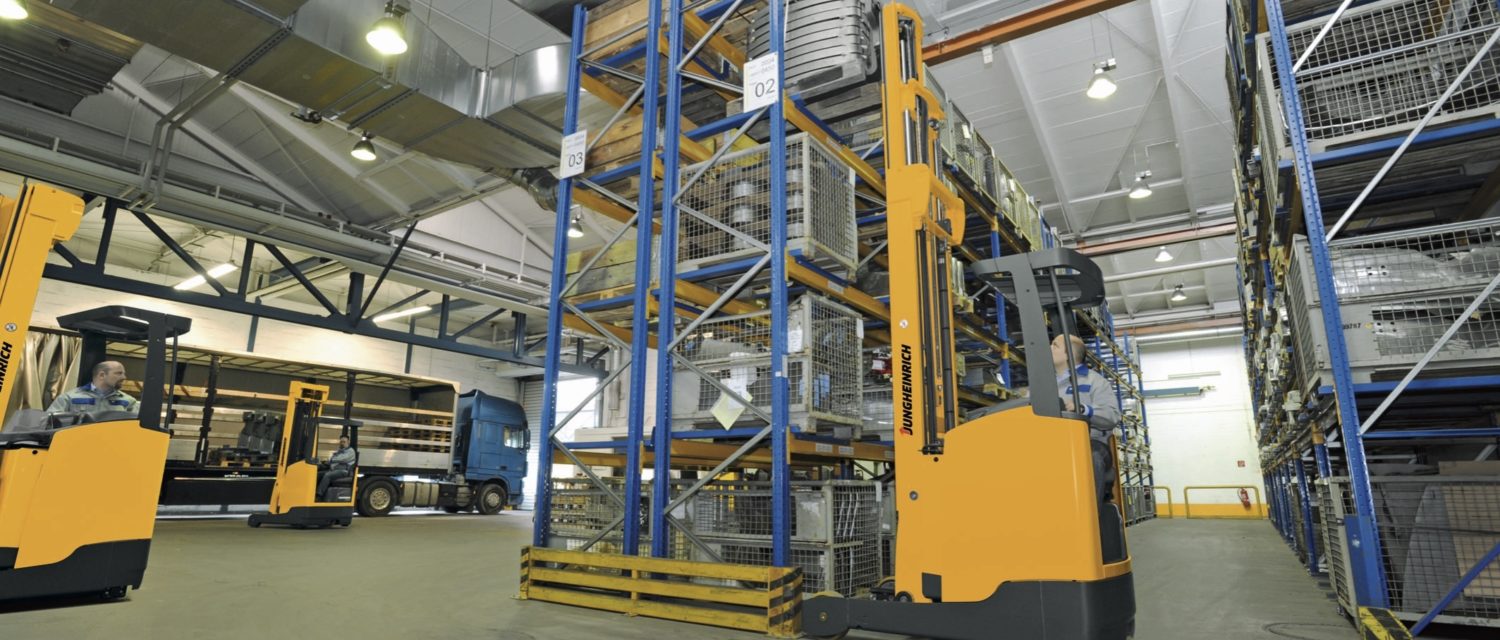The Latest Trends in New Forklift Technology

Technology continuously transforms our world, usually for the
better. New medical technology saves lives. New marketing technology brings in
more business. More personal technology makes access to information faster and
easier. Fortunately for those in the materials handling industry, new
technology means safer, more efficient, and more environmentally friendly
machines.
Even the forklift, that humble workhorse of the warehouse, is
being improved by changes in technology. Here are a few of the latest trends
that are turning forklifts into ever more valuable tools.
Forklift technology is going green.
The introduction of fuel cells about a decade ago meant that
forklifts could run longer and cleaner (and charge up faster) than ever before.
Today, environmental friendliness is even more important to most businesses,
and the focus on green forklift technologies continues apace.
For example, fuel cells are now beginning to be replaced with
lithium-ion technology. These packs use 50 percent less energy than lead-acid
batteries and 100 percent less energy than electric forklifts, all without the
environmental hazards of other power sources. For example, these packs do not
let off fumes or present an acid spill hazard.
In addition, lithium-ion technology is also very efficient and
cost effective, a boon for businesses that want to be environmentally friendly
without breaking the bank. These batteries can easily be charged in a regular
wall outlet, often in just an hour. That is a significant increase in convenience
over needing to reserve specialized charging stations.
A company’s ability to save money with lithium-ion packs comes
primarily from the lower cost of maintaining and charging them. That means less
money spent over their lifetime than with other power sources. It is hard to
argue with a power source that is environmentally friendly and cost effective.
Forklift technology is becoming automated.
Self-driving cars may be making the news, but automated
forklifts pose a real advantage to warehouse managers. These machines, as their
name implies, can operate without a driver. Some of them can use a driver,
during which time they “memorize” the route through the warehouse,
and then be switched to automated mode, during which time they use the data
they have collected to complete the work on their own.
There are a number of forklift
technologies that may underlie automated forklifts. For example, some of
them use learning technology to memorize the route and tasks. Others utilize
sensors or tracks in the warehouse to guide them along their route and their
tasks.
Automated forklifts have a number of advantages for
warehouses. Perhaps their biggest advantage is the fact that they free up
operators to perform other tasks while the forklift performs mundane or routine
jobs. As a result, these lift trucks can lead to higher productivity within the
warehouse and less “error picks” thereby
increasing profits and leading to operators who are more occupied and engaged.
In addition, automated forklift
technology helps warehouse managers to cut down on costs. They do not
need to invest as much money into labor which means that automated forklifts
can easily repay themselves in long-term cost savings.
Forklift technology is leading to smarter braking.
A forklift’s ability to stop quickly is critical to safety in
the warehouse. To this end, new forklift technology
that allows for smarter, faster, and smoother braking is being developed and
holding a lot of promise for warehouse managers.
One of the technologies that is allowing for better braking is
hydraulic valves in the brakes. These valves, which are part of hydrostatic
drives in the forklift, allow the machine to stop faster and more smoothly than
do traditional brakes. In addition, they place less wear and tear on the brakes,
leading to longer life and fewer forklift repairs.
Some forklifts also boast a type of smart technology that
consists of sensors. These sensors can tell when a situation (such as a turn)
is coming up. In response, the sensors allow the forklift to slow down or speed
up appropriately to manage the situation safely.
These types of forklift technologies
are designed to make braking easier while minimizing accidents. For example, by
making it easier to take a turn at the right speed, or by preventing wear and
tear that can lead to accidents, this technology lessens injury to forklift
operators. In addition, they can save warehouse managers money by providing
data that can be used to improve operator efficiency, and by reducing the
number of forklift repairs that must be made.
Forklift technology is making forklifts more maneuverable.
Finally, forklift technology
is improving the maneuverability of lift trucks. For example, some technology
allows operators to override the braking system in order to more easily
complete turns in tight spaces. Other technology is leading to narrower and
more flexible forklifts that make it easier to drive them through narrow
spaces.
This maneuverability allows lift trucks to operate more
safely, and quickly move from place to place through the warehouse. With this
improved ease of movement comes more efficient and safer operation that can
improve the overall operation of the warehouse.
Here at Darr, we help you to maintain your forklifts with
forklift maintenance plans, quality parts, and access to new and used forklifts
that you can buy or rent. If you want to keep your fleet up
to date with the latest technology, including green technology, automation,
braking technology or maneuverability, we can help you. With the right
machines, you can enjoy an efficient, safe, and modern fleet of lift trucks
that maximize your warehouse’s productivity.
